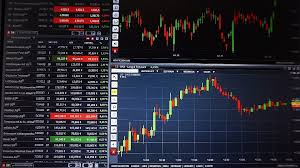Essential Forex Trading Strategies for Beginners 1961038844

Forex trading can be an intimidating yet exhilarating venture, especially for beginners. To help ease the transition into this dynamic world of currency trading, mastering a few effective forex trading strategies for beginners Forex Trading Platforms strategies is crucial. This article will provide you with a comprehensive guide to essential Forex trading strategies, making your trading journey smoother and more successful.
Understanding Forex Trading Basics
Before diving into specific strategies, it’s vital to understand what Forex trading is. The Forex market is where currencies are traded, and it operates 24 hours a day. Currency trading involves the simultaneous buying of one currency and selling another, with the aim of making a profit from the rate differences.
1. Learn the Terminology
Familiarizing yourself with Forex terminology is an essential first step. Some common terms include:
- Currency Pair: The quote of two different currencies, such as EUR/USD.
- Pip: The smallest price move that a given exchange rate can make.
- Spread: The difference between the bid price and the ask price.
- Leverage: A tool that allows traders to control larger positions with smaller amounts of capital.
2. Develop a Trading Plan
A trading plan outlines your goals, risk tolerance, and strategies. It includes the following elements:
- Goals: Identify what you want to achieve with your trading.
- Risk Management: Determine how much of your capital you are willing to risk on a single trade.
- Market Analysis: Decide whether you will use fundamental analysis, technical analysis, or a combination of both.
3. Analyze the Market
There are two main types of market analysis that traders rely on:
3.1 Fundamental Analysis
This involves analyzing macroeconomic indicators, political events, and news articles that impact currency valuations. Traders look at factors such as GDP growth, employment rates, and central bank policies.

3.2 Technical Analysis
This approach focuses on historical price patterns and chart readings to make trading decisions. Traders use tools like indicators and chart patterns, such as moving averages and Bollinger Bands, to speculate on future price movements.
4. Choose the Right Trading Strategy
There are multiple trading strategies you can implement, ranging from scalping to trend trading. Here are a few popular strategies for beginners:
4.1 Scalping
This strategy involves making numerous trades throughout the day to profit from very small price movements. It requires a strict trading plan and fast execution times.
4.2 Day Trading
Day traders buy and sell currencies within the same day, closing all positions before the market closes. This strategy minimizes risks associated with overnight market fluctuations.
4.3 Swing Trading

Swing trading focuses on capturing short- to medium-term market moves. Traders hold onto positions for several days or weeks, taking advantage of price swings in either direction.
4.4 Position Trading
This long-term strategy involves holding positions for weeks, months, or even years. It relies heavily on fundamental analysis to determine the overall trend of currency pairs.
5. Risk Management Techniques
Effective risk management is vital for longevity in Forex trading. Here are essential techniques to mitigate your risks:
- Use Stop-Loss Orders: Set stop-loss orders to automatically close a position at a predetermined loss level.
- Position Sizing: Determine how much capital to allocate to each trade based on your risk tolerance.
- Diversification: Avoid risking a significant portion of your capital on a single trade. Diversify your trades across different currency pairs.
6. Stay Informed and Adaptable
The Forex market is influenced by a myriad of factors, and staying informed about economic news and global events is crucial. Make it a habit to read financial news, participate in trader forums, and follow influential market analysts to enhance your understanding.
7. Practice with a Demo Account
Before investing real money, consider practicing your strategies with a demo account. Most Forex brokers offer demo accounts that simulate real trading conditions without risking your capital. This allows you to refine your trading plan, test strategies, and get comfortable with your trading platform.
8. Review and Reflect on Your Trades
After executing trades, take the time to review and reflect on your trading decisions. Analyze what worked and what didn’t, learn from your mistakes, and adjust your strategies accordingly. Keeping a trading journal can be an effective way to document your experiences and track your progress.
Conclusion
Starting your journey in Forex trading can be challenging, but with the right strategies, you can steadily build your skills and confidence. Focus on understanding the market, developing a solid trading plan, and implementing effective risk management to thrive in the Forex landscape. Remember that trading is a journey that requires patience, discipline, and continuous learning. Good luck!

